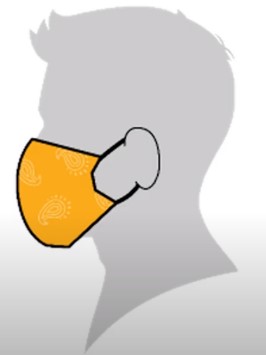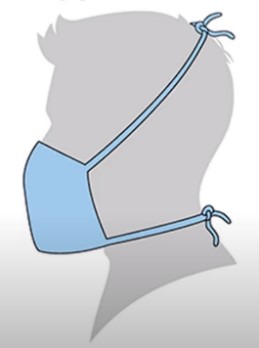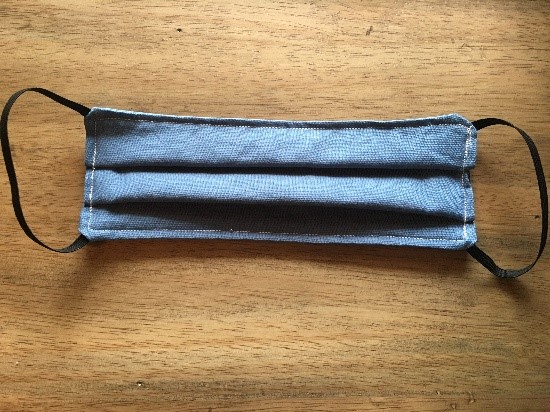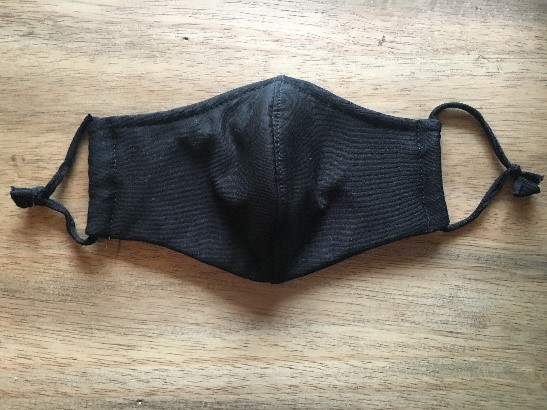Choosing your face mask
It is important to wear a face mask or face covering that works best for you. You may find that a certain type of mask is more comfortable or fits better based on the size and shape of your face and head. Be sure the mask:
- Covers the nose and extends below the chin.
- Fits snugly but comfortable against the side of your face.
- Secured with ear loops or two ties behind your head.
- Has multiple layers of fabric.
- Allows for breathing without restriction.
Common Features
There are many different styles of cloth face masks. Each person may prefer one style over another. The following are basic features of masks.
Straps:
|
|
Shape:
|
|
Metal nose wire or clip: Some masks have a metal nose piece built in to help form the mask to your face. This metal strip can be bent around your nose in order to minimize the void between your face and mask.
Material: The material of masks may differ. A mask should be made of multiple layers of fabric. There is active research across the country including at Illinois to determine the efficiency of different materials.
Proper Use and Care
Regardless of the type of cloth face mask you use, practice donning (putting on) and doffing (taking off) the mask so it can be done properly and effortlessly.
Wash Your Hands
Always wash your hands with soap and water for 20 seconds before and after donning and doffing a mask. If soap and water is not available use hand sanitizer (at least 60% alcohol), rub all areas of your hands until dry. Once you are wearing the mask assume the mask material is contaminated with virus, so anytime you touch the mask accidentally or adjust the mask, wash your hands.
View the Division of Research Safety’s Use of Face Masks Video for a visual guide of proper use.
Donning (putting on)
Ear Loops: With clean hands, put one ear loop on and then the other. Adjust the covering to fit over your nose and below your chin. If there is a metal band over the nose, gently press down to form to your face.
Ties: With clean hands, tie the lower strap around your upper neck. Adjust the covering to fit over your nose and below your chin. Tie the upper strap tightly behind your head. Adjust any metal nose band to form to your face.
While Wearing
The mask must always cover your nose and mouth. Assume the mask is carrying virus so do not touch the mask while it is on your face. If the fit needs adjustment, wash your hands, adjust the mask while trying to avoid touching the cloth as much as possible. Wash your hands once adjusted.
Doffing (taking off)
Untie the straps behind your head or stretch the ear loops to remove the mask. Handle the mask only by the ear loops or ties. If done wearing the mask put it in a bag labeled “dirty” or directly into the wash. Wash your hands. If you are using a disposable mask, throw it directly into the trash.
If you are removing a mask to eat, drink, or doing another activity that will require you to put the mask back on, you must store the mask carefully. One option is to put the mask face down (outside down) onto a clean surface (e.g., a paper towel).
Washing
The CDC states that a washing machine should suffice to properly washing a cloth face covering. Be sure to use laundry detergent. If you do not have access to a washing machine, you can hand-wash using soap. Air dry or put in the dryer.
Tip: Use a mesh laundry bag or pillowcase to put your mask in if using the washing machine. This may help prevent the mask from being damaged in the wash. If a metal nose piece can be removed, do so before using the washing machine.
Tips and Tricks
Fogging eyeglasses: To help prevent glasses from fogging, treat your glasses with camera lens defogger or wash with soapy water. Use a mask with a metal strip over the nose to help fill the void that allows air to flow under your glasses. Secure the top of the mask around the nose with athletic tape or medical tape (do not use household tape like duct tape). Adjust the glasses on the bridge of the nose so that less air is directly hitting the eyeglasses.
Comfort of ear straps: Some may find the ear straps to be uncomfortable over time. Ear savers can be purchased from various online stores or 3D printed.
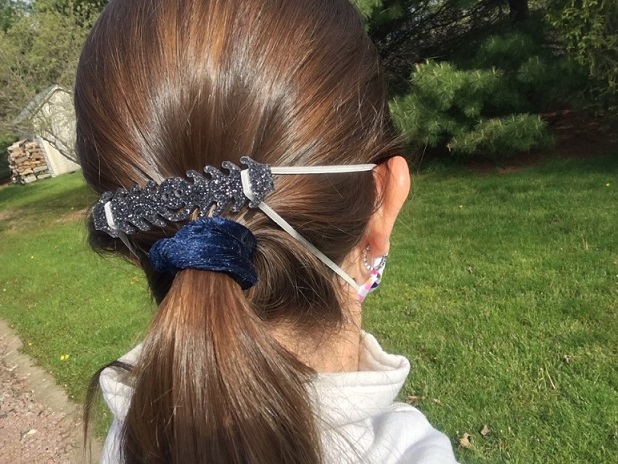
Tighter fit: Voids between the mask and the face allow air to flow around the face mask. Find a mask that fits well against your face. Tighten the straps if possible. It is also an option to use a nylon stocking over the face mask to minimize some of the voids.
